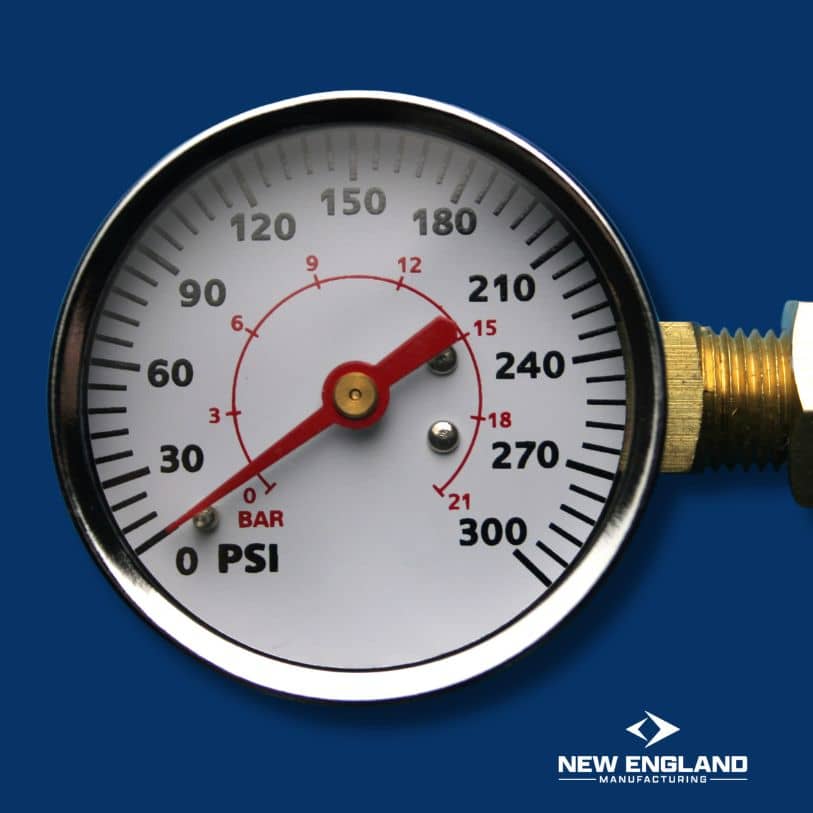Ensuring Accuracy and Reliability: A Guide to Pressure Gauge Calibration
When it comes to ensuring the accuracy and reliability of pressure gauges, calibration emerges as a critical process. These instruments play a pivotal role in a variety of industrial applications, from monitoring air and fluid pressures in pipelines to managing operational safety in manufacturing processes. Inaccurate readings can lead to serious safety hazards, inefficiencies, and increased operational costs.
That’s why understanding the nuances of pressure gauge calibration is crucial for any industry that relies on these tools. This post aims to demystify the calibration process, providing you with essential knowledge and practical tips to maintain the precision of your pressure instruments.
What is Pressure Gauge Calibration?
Pressure gauge calibration is verifying and adjusting a pressure gauge’s readings to ensure its accuracy. This is usually done by comparing the gauge against a standard known to have precise measurements. The goal is to identify discrepancies and make necessary adjustments to the gauge to align its readings with the standard. The calibration of pressure gauges is not just a routine check; it’s a vital step to ensure that instruments operate correctly and produce accurate results.
Why is Calibration Necessary?
Over time, pressure gauges can drift from their original settings due to factors like mechanical wear, environmental conditions, and regular usage. This drift can lead to inaccurate readings, which might cause operational inefficiencies or safety risks. By regularly performing pressure gauge calibration, businesses can ensure ongoing accuracy, enhance safety, and optimize performance. It also helps adhere to regulatory standards that might be in place for specific industries, ensuring that all operations are within legal and safety guidelines.
The Calibration Process Explained
The process of calibrating a pressure gauge typically involves several key steps. First, the gauge is inspected for any physical damage that might affect its performance. Next, it is connected to a calibration device that applies known pressures to the gauge. As the pressure is applied, the readings from the pressure gauge are recorded and compared to the known values provided by the calibration device. Adjustments are then made to the gauge to correct any discrepancies. This process may be repeated several times to ensure accuracy.
Choosing the Right Calibration Standard
Selecting an appropriate calibration standard is crucial for effective pressure gauge calibration. The standard should ideally exceed the accuracy of the gauge being calibrated. For most industrial applications, a standard with an accuracy class better than that of the gauge by at least a factor of four is recommended. This ensures that the calibration process itself does not introduce uncertainty into the gauge’s readings.
Frequency of Calibration
The frequency with which you should calibrate your pressure gauges depends on several factors, including the gauge’s usage intensity, environmental conditions, and the critical nature of the measurements it takes. Gauges used in harsh conditions or for highly critical measurements might require more frequent calibration than those used in less demanding environments. Generally, annual calibration is advisable for most gauges, although those under severe use may need quarterly or even monthly checks.
DIY vs. Professional Calibration
While some simple calibration checks can be done in-house using standard equipment, professional calibration services are recommended for high-accuracy requirements. Professional services ensure that calibration is done according to industry standards and that the equipment is regularly calibrated and maintained. This is particularly important where precise measurements are critical to safety and operational efficiency.
The Role of Calibration in Troubleshooting
Calibration plays a significant role not only in maintaining accuracy but also in troubleshooting issues with pressure systems. Inaccurate gauge readings can often be the first sign of problems in a system, such as leaks or blockages. You can trust them to help identify and diagnose such issues quickly by ensuring that your pressure gauges are accurately calibrated.
Conclusion
The calibration of pressure gauges is a fundamental aspect of maintaining industrial safety and efficiency. It ensures that gauges provide accurate readings crucial for operational management and safety compliance. Understanding how to perform pressure gauge calibration properly, how often it should be done, and the importance of using the correct standards and professional services cannot be understated.
Whether in manufacturing, engineering, or any field that relies on precise pressure measurements, taking the time to understand and implement proper calibration practices is essential for success. Remember, accurate pressure measurement is not just about numbers; it’s about ensuring your operations’ ongoing reliability, efficiency, and safety.
Read More:
Essentials of Pressure Gauges

Mark R.
With a strong foundation in industrial safety and fire protection systems, Mark R. specializes in creating clear, technical, and compliance-driven content. Writing for SafeTech Reports, he covers topics such as fire hydrant testing, PPE protocols, emergency procedures, and smart technology integration in safety systems. His work ensures that professionals stay informed on the latest regulations, best practices, and emerging trends in safety and infrastructure maintenance.
Get in touch
We usually respond within 24 hours
Need Reliable Water Flow Test Equipment?
For over 70 years, New England Manufacturing has been the trusted source for fire hydrant and water flow testing kits. From pitot gauge kits to custom test kits, we provide precision, durability, and expert calibration to meet your needs.
- Custom-built test kits
- High-quality pressure gauges
- Reliable calibration services


